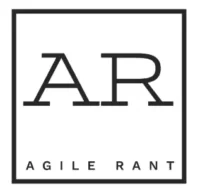
Have you ever encountered obstacles in software projects due to processes and tools? Perhaps there were better alternatives, but existing processes, practices, and habits made it challenging to implement improved software processes or tools. Maybe the best Agile team practices were not in place.
What about documentation? Have you experienced situations where there was an excessive focus on documenting how the software worked and other additional details? Or perhaps a lack of documentation hindered the Agile teams involved?
- Enhancing Agile Team Best Practices
- Exploring the Agile Manifesto for Agile Team Best Practices
- Putting Agile team best practices to use— individuals and interactions
- Putting into practice — working software over comprehensive documentation
- Check Out The Modern Product Owner!
- Remember to be Agile my friends
- Additional content and books around agile team best practices
Enhancing Agile Team Best Practices
If you’ve encountered challenges, does your team require a boost in Agile best practices? Understanding and revisiting the principles of the Agile Manifesto can be immensely beneficial. There are 4 fundamental values within the manifesto that warrant exploration. Therefore, let’s delve into Agile software development and the Agile Manifesto. Immersing in the methods and concepts of the manifesto will benefit your project team, allowing you to continually enhance your Agile team best practices!
Exploring the Agile Manifesto for Agile Team Best Practices
First, individuals and interactions are prioritized over processes and tools. This emphasizes the importance of communication and collaboration in the Agile process. Teams should prioritize conversations over relying solely on processes and tools, as this is crucial for Agile team best practices. Communication can be a challenge for any team, so any improvements in this area will have a significant impact. Effective communication and collaboration are essential for delivering value. Here are some ideas to support this.
Don’t hide behind process!
Team members often rely on process, which can sometimes delay work or lead to individuals hiding behind it, using it as an excuse for not delivering tasks and avoiding interactions. This tendency might stem from a habit developed during Waterfall development.
However, it’s important to prioritize individuals and interactions over process and tools because the latter are only effective when applied correctly and in conjunction with human involvement. Processes and tools alone do not suffice; the human aspect is crucial in Agile practices.
Understanding of goals requires direct communication
Thus, individuals and interactions are crucial. The agile team engages with users to discuss goals and needs, building understanding through these interactions. The team then works towards delivering to users, followed by seeking feedback through further interactions.
Interactions are a vital aspect of Agile processes for the team, as delivering business value is challenging without a direct understanding of the needs. Effective teamwork is based on communication and collaboration.
Remember the flexibility that you have
Adaptability and flexibility are essential to Agile, as they are integral to the methodology. The core idea is that not all work is identical, so a one-size-fits-all approach does not suffice. It is acceptable, and even preferable, to vary how work is approached. Flexibility and agility are crucial aspects of the Agile team’s mindset for best practices. Remaining flexible is key to delivering the best possible work on your software project.
No substitute for good communication between the parties
This enables all other agile aspects to flow. Without communication, working software cannot be built. Lack of communication leads to missed customer collaboration and an inability to respond to change. For teams new to Agile, it’s important not to let project management habits and past development methodology processes hinder good communication.
The people involved in agile development cannot be replaced with processes and tools
Putting Agile team best practices to use— individuals and interactions
The concept of individuals and interactions is more complex and abstract compared to other parts of the manifesto. However, it ultimately comes down to communication. When in doubt, it’s important to communicate with the necessary individuals. There is no substitute for discussing user needs and observing their actions and reactions.
The information gathered from these personal communications is invaluable and difficult to fully capture in requirements documentation. A direct understanding of user needs enables the team to create high-quality software that meets those needs.
Many factors can hinder effective communication, such as work schedules and conflicting priorities. It’s important to remember the ultimate goal of delivering valuable software and find ways to overcome these obstacles through communication with the team and users. The concept of individuals and interactions is all about cultivating the ability to communicate effectively, as communication is essential for delivering value.
Working software over comprehensive documentation
The next principle is prioritizing working software over extensive documentation. The emphasis should be on producing work that adds value. Documentation is only useful insofar as it supports the software. The goal should be to develop valuable software and then provide the necessary documentation. If software requires detailed documentation, it should be made simpler. Create straightforward and practical documentation to meet the requirements, and avoid excessive documentation. This will allow effort to be focused on creating valuable software and products.
Simplicity in the work also facilitates the team’s ability to finish tasks. By breaking the work into smaller, simpler parts, the team can more easily carry out the tasks and then move on to the next ones.
Place the work first, and documentation second
The main objective is to always provide functional software. Software that is not functional, even with detailed documentation, appears somewhat futile. Therefore, the primary focus should be on delivering functional software. Subsequently, it is important to supplement it with useful documentation. It is crucial for the documentation to complement the software. The team should be self-organizing in this regard, creating just the right amount of documentation necessary. There should be some documentation, but not so much that it hinders the work process.
Just like the software, don’t over complicate the documentation
Simplicity is key. This applies to both software development and documentation. Instead of trying to create a comprehensive document all at once, focus on keeping it relevant and concise. Add necessary information as you go, addressing additional needs over time.
Putting into practice — working software over comprehensive documentation
Working software is more concrete than comprehensive documentation. The focus should be on creating functional software first, with documentation as a secondary concern. The software should drive the documentation, not the other way around.
Teams can develop documentation as they work on the software, or revisit it after the software is created. It is important to keep the information streamlined and avoid over-documenting.
It is important to remember that documentation should not replace interactions. Conversations should not be replaced by documentation, as valuable information and meaning can be lost in the translation between mediums. Instead, use documentation to support and reinforce what is learned from conversations. Do not use it to replace them.
Agile team best practices for customer collaboration over contract negotiation
The third principle prioritizes customer collaboration over contract negotiation, emphasizing the importance of user and customer feedback in agile software development. Agile aims to deliver smaller work increments, enabling quicker and more frequent feedback. This facilitates adjustments to better align with goals and requirements. Customer feedback allows teams to gain deeper insights and discover issues faster compared to traditional requirement gathering processes.
Customer feedback often provides more accurate information than other sources. While traditional requirements may be incorrect or incomplete, customer feedback is less likely to lack essential details.
The received feedback serves as actionable information for the team, eliminating the need to search for and interpret data as required with traditional requirements. This allows for a direct focus on actionable work and value delivery.
Thoughts on contracts and negotiation
Contracts are inflexible. If the team focuses on negotiating contracts, they lose sight of the customer’s goals and needs. Contracts lack the capacity to grow and evolve. This is necessary for two reasons. Firstly, it’s impossible to know everything upfront, so a contract defining software work becomes inaccurate almost immediately after it’s considered complete. Secondly, business needs will change over time, and contracts don’t have the flexibility to accommodate that change.
Instead of negotiating a contract to dictate what to do or not to do, negotiate features to help deliver value. Negotiation is and should be a part of software development. There are always trade-offs to consider when deciding what to prioritize and what to do.
The trouble arises when the contract specifies the details of the work and you have to constantly negotiate it. Work requirements change over time, and the necessary flexibility to meet those needs isn’t provided by having work details in the contract. It would be better, as much as possible, to avoid specifying work details in the contract. This would help in avoiding some of the constant changes that could occur.
Check Out The Modern Product Owner!
Responding to change over following a plan
The fourth value is adapting to change over following a plan. Acknowledging that all work cannot be fully understood upfront, the ability to respond and adjust is crucial. In agile, the emphasis is on recognizing that not all requirements are known from the start, and there are processes in place to facilitate this. Incremental delivery and effective feedback processes are key components. This is why Agile frameworks advocate for shorter sprints or iterations, providing more opportunities to adapt to changes. This approach aligns with good iterative development. If the software development process spans months instead of weeks, it significantly delays the delivery of work and the ability to respond to change.
Having the mindset to respond to change is essential, as it allows for the departure from the original plan. If the initial requirements were incorrect or incomplete, they will need to be adjusted. Without flexibility, it becomes impossible to pivot, thus hindering the ability to effectively meet the needs and goals of the user or customer. The team must always remember their objective is to deliver value to the user and customer. Resistance to change may result in delivering items of lesser or no value at all.
Responding to business need changes will happen
Flexibility and the ability to respond to changing business needs are crucial. Even with thorough upfront planning, work requirements may change due to shifts in the business environment. For example, a merger between competitors could render previous product development efforts irrelevant, as the product line may be shared instead of competing. The constant changes in the business environment highlight the importance of being able to adapt and respond effectively.
Responding to technology changes
Finally, I want to emphasize the importance of adapting to technological advancements. While working on a project, it’s crucial to remain open to new and improved solutions that may emerge due to evolving technology. The rapid pace of technological progress means that a superior method or tool could be developed while you’re in the midst of a task, prompting a need to adjust your approach.
Embracing new technology has the potential to yield superior outcomes. Failing to adapt to change may result in missed opportunities to achieve the optimal solution. For instance, an updated version of a technology may offer new features that effectively address a team’s challenges. In such cases, it’s essential to be receptive to these advancements and consider integrating them into your work. Without this flexibility and readiness to adapt, you risk forgoing the most effective tools and methods, opting instead to create solutions from scratch.
Remember to be Agile my friends
At its essence, Agile methodology is about how you conduct yourself and solve problems. It also pertains to how you manage your work. Embracing the Agile approach will equip you with the necessary tools. The Agile principles and concepts will assist you in establishing excellent practices. Whether in your Agile projects or any other work, keep the values in mind. Then strive to implement them, and be the rock-star that you are!
Additional content and books around agile team best practices
Of course, lets link to the Agile Manifesto, for reference. A great tool for helping boost your Agile team best practices.


